Skip to:
- Give Today
- Contact Us
- Media
- Search
News & Stories
Leadership Development Program
Undergraduate Teaching Program
Common search terms
My classroom rules are straightforward and simple, while still seeking to encapsulate the lively dynamics of a classroom: we feel safe, respected and seen. Each cohort and class get the opportunity to unpack what that might look like and feel for everyone in the room, including me.
The Teach For All and Teach For Australia community have dedicated themselves to addressing educational equity in all forms. It is a huge and complex issue, which can look very different, depending on your context. Often people think towards socio-economic disparities, literacy and numeracy gaps, and cultural and language diversity.
Diversity is an essential part of a healthy, functioning society. Completing TFA’s Leadership Development Program as an Associate in a regional hub in a geographically isolated area opened my eyes to some of the ongoing challenges involved in active and meaningful inclusion. It is essential that other forms of marginalisation are not neglected, such as sexuality and gender diversity.
In this blog post for the TFA community, I want to explore the nature and consequence of not differentiating for this population and share some of the wonderful strides we are making at my school to support students.
In 2018, the What’s Up In Your World youth census surveyed 11,000 young Australians. Of the respondents, 20 per cent identified as LGBTQIA+. While we may not always know they are there, it is best practice to assume every classroom contains diverse students, who deserve to feel safe, respected and seen (UNESCO, 2018).
LGBTQIA+ inclusion in regional and rural schools has been explored in the 2019 Queer Out Here report by Minus18 Foundation. Drawn from extensive consultation across the country, it echoed extensive research to date, including that three-quarters of Australian young LGBTQIA+ people are impacted by homophobic, transphobic and biphobic abuse; and that there are strong correlations between experiencing such discrimination and poorer academic (attendance, motivation and achievement) and mental health outcomes (including anxiety, depression and self-harm) (Hillier, et al., 2010; Ullman, 2015).
Such barriers to safety and inclusion are experienced at a significantly higher rate in rural and regional areas, which demands attention and championing. In line with the research, this has been reflected in my professional observations teaching in a rural area and in the perspectives my students have candidly shared with me.
Queer Out Here detailed how staff and student participants had witnessed regular negative comments (78%) and physical actions (22%) towards LGBTQIA+ youth. One-third believed it would be safe to ‘come out’ in their school environment (Minus18, 2020, pg 9). The need to address this, strategically and consistently, at individual, class and school-wide level is undeniable and essential for the wellbeing of our young people but it isn’t always prioritised: 87.5% of youth consulted wanted more action from schools and their teachers to address discriminatory behaviours and language (Minus18, 2020, pg 10).
As teachers, we are well positioned to notice and to act when students show signs of disengagement, social withdrawal, negative thought patterns, decreasing academic performance and depression (headspace, 2012; 2019). While many staff, including myself, have received in-depth suicide intervention training to respond to this, the proactive creation of safe and inclusive spaces for our LGBTQIA+ students is prevention.
We want our students to thrive, by feeling safe, respected and seen, and equally able to extend the same to those around them. Strategic empowerment through a range of tools and actions is possible, whether in the form of diverse representations in resources, social and support spaces or visibility material which can all have a hugely positive impact (Heck, Poteat & Goodenow, 2016).
The internet is awash with great ideas and tools for anyone looking, but working together on creative and compassionate solutions is an opportunity to build student leadership and cohesion. I have deeply enjoyed collaborating with students and staff in my own school to come up with ideas that will work for us. While my professional background provided me with the skills, knowledge and passion to progress this within my school community, this work takes a village.
At my school, we’re making great strides in this space with the coordination of several events and actions. Last year I organised a festival event, known as Diversity Day in which all students were encouraged to wear unique socks to school with their uniform to showcase our individual differences. Sixteen different activities were held at lunch, including cake stalls, blind soccer, hand printing banners, tie-dying, traditional ininti bead making and STEM activities around biodiversity.
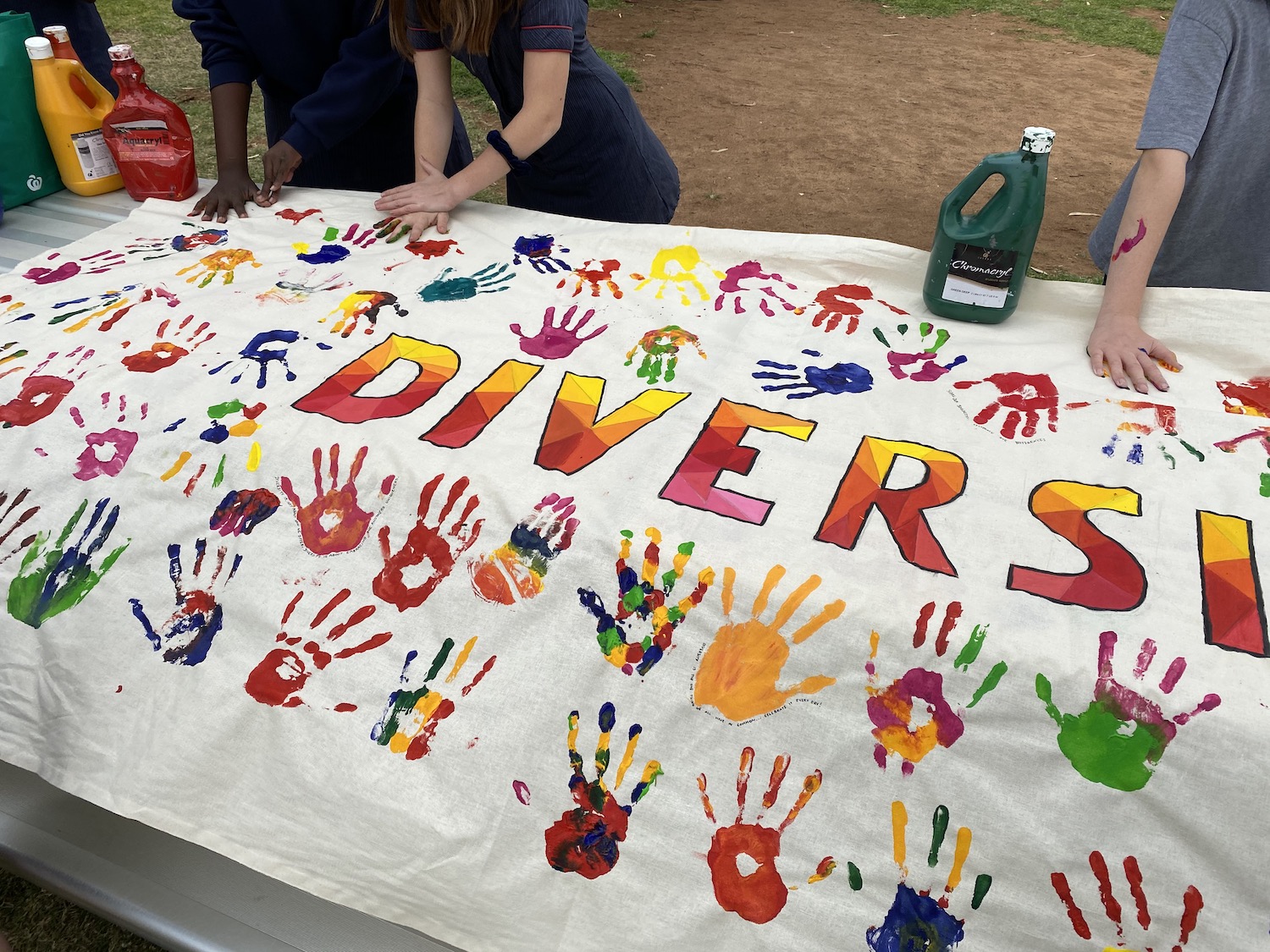
“Well done on planning such an amazing event. It was great to see so much going on and celebrating so much about diversity in so many different ways.”
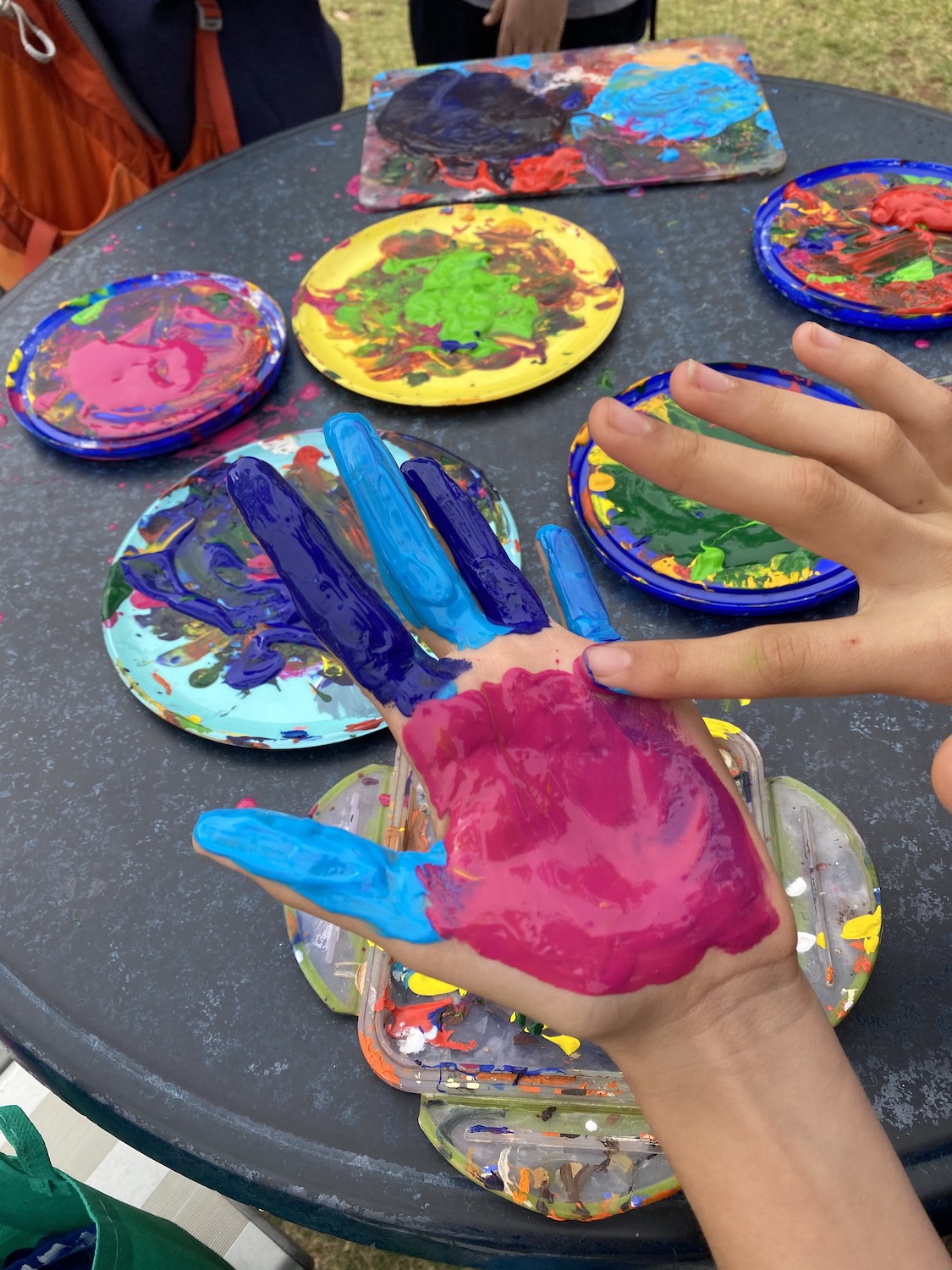
“It was one of the first things [my child] spoke to me about when I got home. I hope similar conversations were going on in other homes yesterday afternoon.”
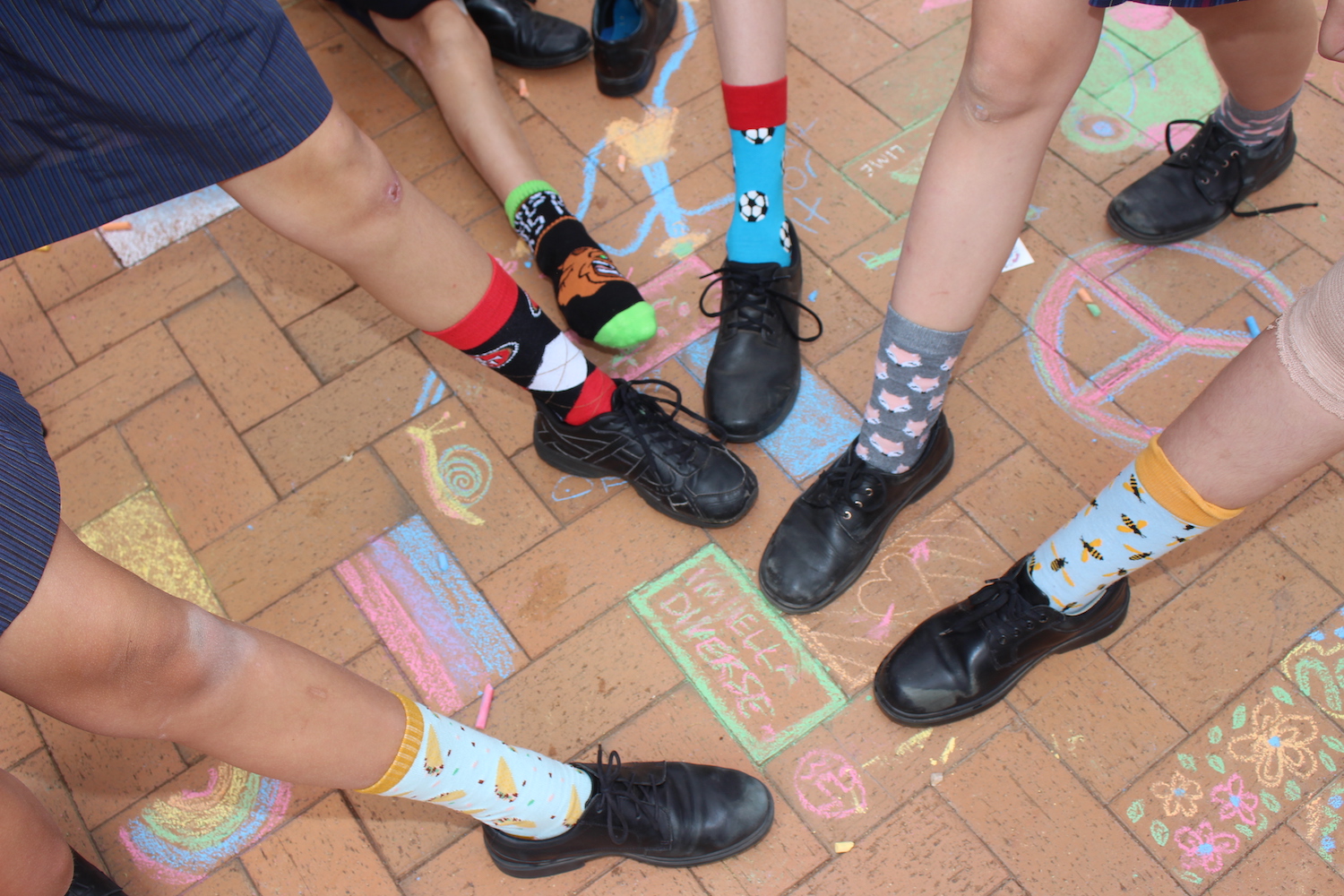
“Thanks for all your efforts and vision to make yesterday possible. It was a wonderful event with a strong message. I have heard positive feedback from many. I think most students really engaged with the concept – and had a lot of fun.”
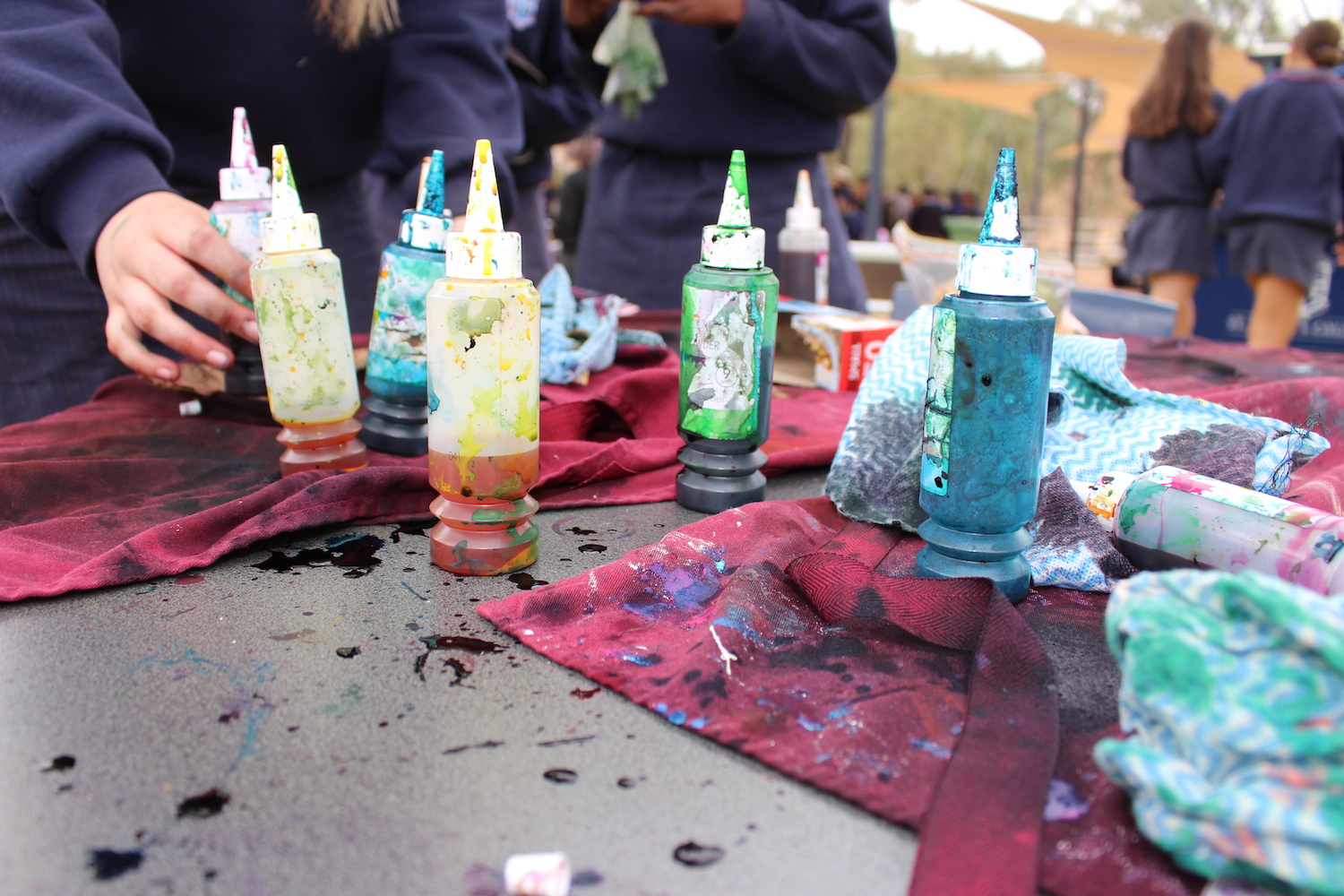 The school community enjoyed celebrating the day, describing the positivity generated as ‘infectious’. Here is what one senior student had to say about the event:
The school community enjoyed celebrating the day, describing the positivity generated as ‘infectious’. Here is what one senior student had to say about the event:
“Diversity day to me is a celebration of the differences that make us human. It was incredible seeing everyone get so involved within all the activities and being so inclusive. Even more so exciting seeing everyone share their experiences in a safe and inclusive environment that was free from judgement.
“For the people around me, it was heart-warming to watch them have a day that celebrates their differences. My dearest friends were able to see that they are loved and accepted for their differences, not only by me, but accepted by the whole school. These experiences provide solidarity and can change people’s lives as it is so important to look after the members at our school.
“Especially, with the news covering protests around the world at the moment about equality and the BlackLivesMatter movement, it was very important that the school be on the right side of history and help celebrate diversity.
“I am so very grateful that the school helped celebrate this day and it will be forever a fond memory that I have with the school.”
We also started a weekly drop-in group where students can collaborate on advocacy projects and chat with other students and staff in a safe space. Known as the Umbrella Collective, in reference to the all-inclusive umbrella term of LGBTQIA+, it also nods to the importance of having allies help hold the umbrella up, and the value of allied relationships in supporting student inclusion and safety.
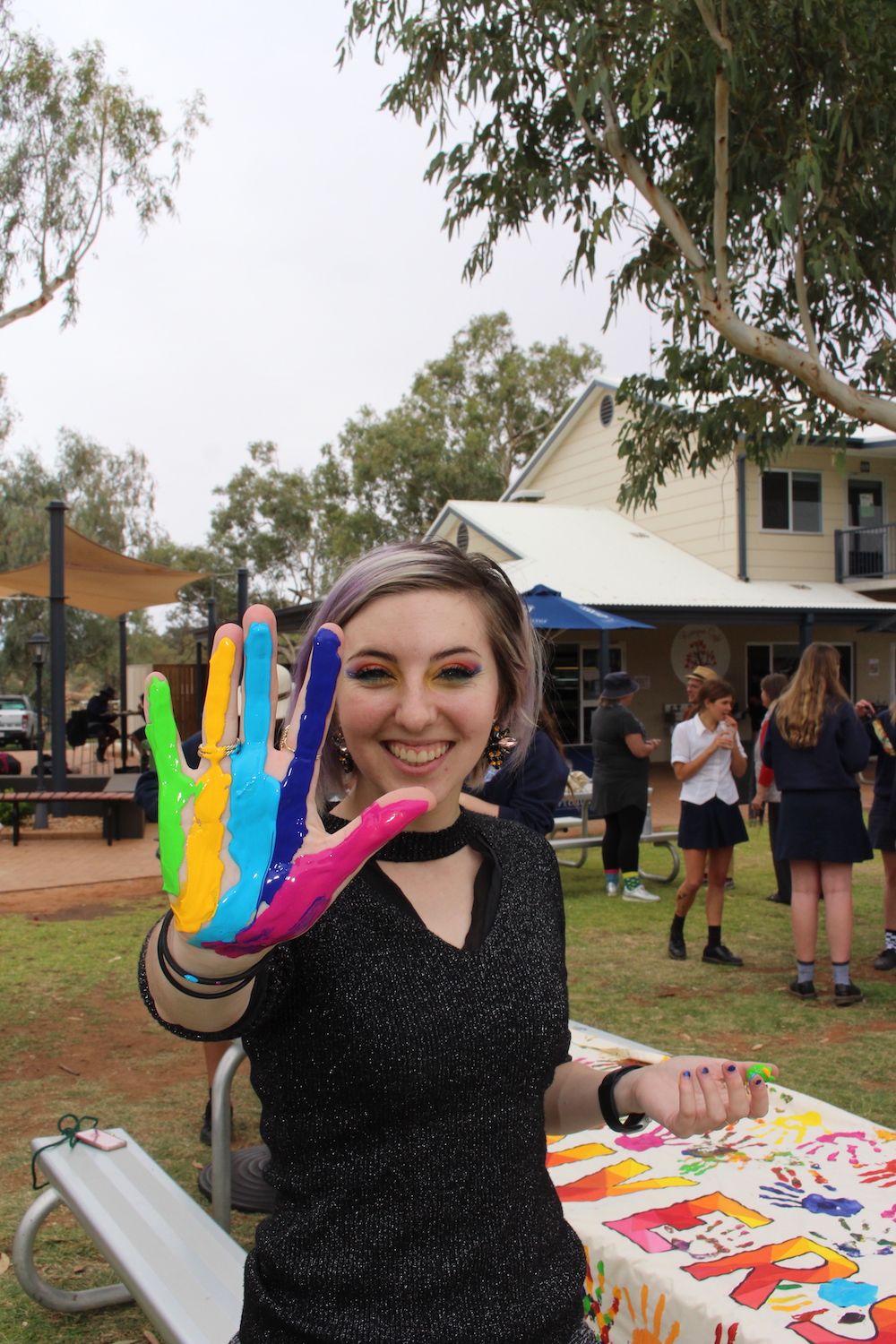 In its second year now, I hope that this group will be sustainable and that it can continue to help develop a more inclusive and aware school culture, supporting wellbeing for students and staff. For example, respectful and inclusive language was flagged by some of these students as a barrier to safety in our school environment. Together with staff support, we helped shape a whole school assembly message about respectful pronoun use, which was recently broadcast, and helped sparked a number of constructive discussions in different sectors of the school. Student feedback has been overwhelmingly positive and it has been a joy to see them grow in confidence and compassion for one another. It has been an opportunity for student engagement and leadership that has already justified the effort made to establish it.
In its second year now, I hope that this group will be sustainable and that it can continue to help develop a more inclusive and aware school culture, supporting wellbeing for students and staff. For example, respectful and inclusive language was flagged by some of these students as a barrier to safety in our school environment. Together with staff support, we helped shape a whole school assembly message about respectful pronoun use, which was recently broadcast, and helped sparked a number of constructive discussions in different sectors of the school. Student feedback has been overwhelmingly positive and it has been a joy to see them grow in confidence and compassion for one another. It has been an opportunity for student engagement and leadership that has already justified the effort made to establish it.
It takes a village to ensure that our students are safe, respected and seen, so that they can thrive at school as resilient, capable and motivated learners. I look forward to seeing our efforts grow in line with the needs of our students, to address this educational inequality.
References
Heck, N. C., Poteat, V. P., & Goodenow, C. S. (2016). Advances in research with LGBTQ youth in schools. Psychology of sexual orientation and gender diversity, 3(4), 381.
Hillier et al. (2010). Writing Themselves In 3: Australian Research Centre in Sex Health and Society
Minus18 Foundation. (2019). Young and Queer Report: Youth Driven Ideas for a Better Victoria
On The Line. (2017). Latest suicide data from Australian Bureau of Statistics (ABS). Retrieved from https://ontheline.org.au/media-releases/latest-suicide-data-australian-bureau-statistics-abs/
triple j. (2018). What’s up in your world. Australian Broadcasting Corporation. Retrieved from https://www.abc.net.au/triplej/programs/hack/whats-up-in-your-world-the-census-for-young-people/10051266
Ullman, J. (2015). Free2Be?: Exploring the schooling experiences of Australia’s sexuality and gender diverse secondary school students.
United Nations Educational, Scientific and Cultural Organization [UNESCO] (2018). Why comprehensive sexuality education is important. Retrieved from https://en.unesco.org/news/why-comprehensive-sexuality-education-important
Applications for Cohort 2022 of our Leadership Development Program are open now. Apply here, register your interest or attend an event.